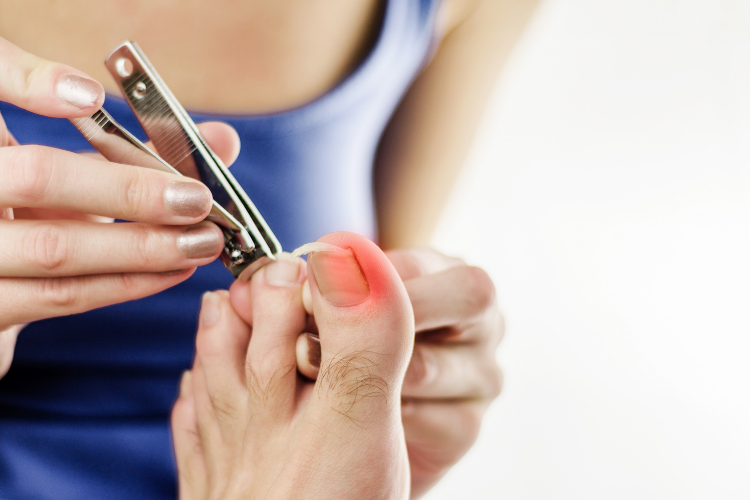Nail Surgery
Sometimes toenails grow into the skin or develop fungal infections, one option for treatment is to remove part or all of the nail under local anaesthetic. This surgery can be performed when your podiatrist has diagnosed a deformity of one or more of your toenails.
Some of the most common deformities that can be solved by nail surgery are:
Excessively curved nails also known as an involution
Excessively wide toenails
Thickened toenails caused by a fungal infection or trauma
Incorrect cutting of the toenails
Ingrown toenails are nails that have grown into the skin next to your nail. Your big toe is most likely to get this infection, but it can happen to any of them. An ingrown nail can predispose the skin around the nail to swell and press onto the nail, leading to pain. This can then cause infection.
These are especially relevant to diabetic patients and other high-risk patients.
If there is an infection present, your doctor will likely prescribe antibiotics. However, these antibiotics will not be enough to cure the problem. The cause of the infection (the nail being embedded in the skin) must be addressed. Otherwise, the infection and pain will continue after you have finished your course of antibiotics.
There are various conservative treatments for nail related issues, but these will often not cure the problem. If the pain or infection is recurring or very prominent, surgery is recommended.
Will the whole nail be removed?
When undergoing nail surgery, usually only the part or parts of the nail causing the problems are removed. This is known as a partial nail avulsion. When undertaking a partial nail avulsion, we will often apply a chemical called phenol to the nail plate. This prevents the cells of the nail matrix from growing back incorrectly and causing further problems.
In some cases, the entire nail may need to be removed due to becoming damaged, thickened or infected. This is known as a total nail avulsion. When undergoing total nail avulsion, we will numb and then remove the whole nail so that we can effectively treat or remove the problem. Following a total nail avulsion, the skin under the nail will become harder to protect the toe.
What happens at the toenail surgery procedure?
For the day of the procedure, you can carry on with your regular routine and eat and drink, but you should make sure to give yourself some downtime after the procedure. It’s important to provide yourself with some rest for the rest of that day.
To start, the base of the toe is numbed with a local anaesthetic applied to it. This is the only painful part of the process and feels no worse than any other injection.
When your toe is completely numb, our podiatrist will use an antiseptic solution to reduce the risk of infection to the toe. The nail or piece of nail causing the problem will then be removed. To stop the toenail from regrowing, we will then apply a chemical solution (phenol) to the base of the toenail.
A protective dressing will then be applied to the toe, and then the operation will be complete. The whole procedure typically only takes between 45 minutes to an hour for one toe.
We will also ask you to arrange a follow-up appointment to assess the toe to ensure there are no problems and so that we can redress the toe.
You can then go home and relax for the rest of the day!
If you are experiencing pain caused by an ingrown toenail, you can contact us on the button below. We will be happy to assess the problem and recommend the best course of treatment for you.


